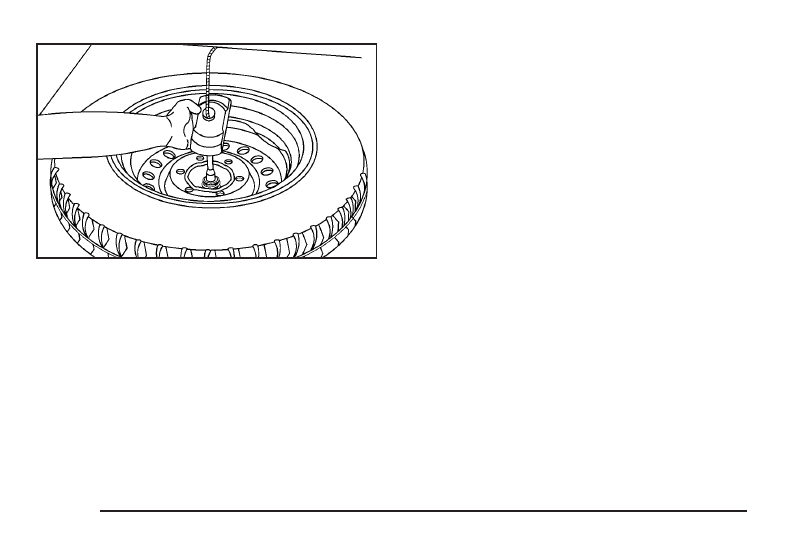Pontiac Montana SV6 (2006 year). Instruction - part 24

3. Tilt the retainer at the end of the cable to remove
the compact spare tire, so it can be pulled up
through the wheel opening.
If your vehicle is an AWD vehicle, after removing
the compact spare tire, turn the wrench clockwise to
raise the cable back up. On an AWD vehicle, you
can not store a full-size tire under the vehicle.
It should be stowed inside the vehicle by the cable
provided. See “Storing the Flat Tire on an
All-Wheel-Drive Vehicle” under Storing a Flat or
Spare Tire and Tools on page 5-83 for more
information.
If you have a front-wheel-drive vehicle, the hoist is
used to store a full-size or a flat road tire under
the vehicle. See “Storing the Flat Tire on an
Front-Wheel-Drive Vehicle” under Storing a Flat or
Spare Tire and Tools on page 5-83 for more
information.
4. Remove the compact spare tire from the cable.
If the compact spare tire will not lower, check under the
vehicle to see if the tire is hanging loose and the
cable end and spring under the wheel plate are missing.
If so, the secondary latch system is engaged.
See Secondary Latch System on page 5-81.
To continue changing the flat tire, see Removing the
Flat Tire and Installing the Spare Tire on page 5-75.
5-74